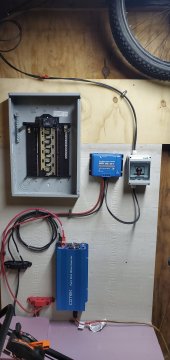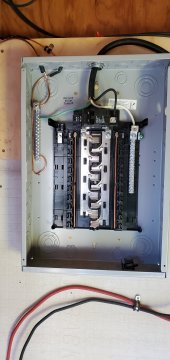BlueMarblePA
Solar Enthusiast
 i have this plan to run my 24v 1500 watt inverter to a 100 amp circuit panel. I know that I only have three wires and thus only half the panel will be active and thus only single pole circuit breakers will work, but I am hoping with more and more panels will one day allow me to provide more amps and 240 volts.
i have this plan to run my 24v 1500 watt inverter to a 100 amp circuit panel. I know that I only have three wires and thus only half the panel will be active and thus only single pole circuit breakers will work, but I am hoping with more and more panels will one day allow me to provide more amps and 240 volts.Does this make sense?!





